
Remote Teaching and Learning
Working out the best way to help your class continue learning while schools are closed is going to be a challenge. Here is the PlanBee guide to general things to think about, and some resources to help you out.
School closures are a strange situation for everyone involved. Everyone is feeling their way and working out the best route forward. Some people will be feeling scared, some will be worried about money and most people will probably be feeling a mixture of a whole load of things.

Practical General Advice
Parents are not teachers and they may be trying to juggle working remotely while looking after their children. Use this information to help you make your expectations of what work can be set and completed realistic:
- Teach your children how to use the platforms you’ll be sharing work on.
- Work out how you will meet SEND needs and think about children's IEPs.
- Think about how children will access support if they are finding a task or a concept difficult.
- Find out who has access to computers, tablets and the internet. They may be sharing one device between the family and they might not have unlimited data. Large, lengthy presentations might not be suitable for lots of families.
- Have a clear policy around your expectations of how the work you set will be completed. Make a decision if pupils are expected to be present and actively engaged at a set time, or if you want children to do the work at their own pace, and make sure both pupils and parents are aware of this.
- Decide if pupils need you to send home paper and pencils, or extra reading books. On that note, consider all the resources they will need to complete the learning when setting a task and make sure children have easy access to everything they will need.
- If you plan to have live online classes with your students, schedule them carefully. If siblings in different classes have meetings at the same and the family only have one tablet, one child will be unable to access the learning.
- Remember the chances are that children’s screen time consumption will go up. Where possible, get the children working practically, just as you would in school.

Tools for sharing set learning with children
Google Classroom
Google Classroom allows you and your class to share work. Google has put together several information packs explaining how to use their resources for remote learning.
Google Classroom Features:
- Create a virtual classroom and upload documents and tasks for your students to complete. There is a handy ‘Make a copy for each student’ option, so you don’t need to worry about students editing or deleting each other's work.
- Mark work and give feedback.
- See which assignments have been handed in and which ones haven’t in the assignment menu.
- Google Hangouts is available for you to chat with and video call your students.
Screencastify
Screencastify allows you to record and share presentations with your class. You can narrate and annotate the slides, then share your presentation so the children can view it. This is an add-on to your Chrome browser.
Screencastify Features:
- Record a video using your computer camera, or you can record part of your screen or all of it. Videos can include audio or you can mute the audio.
- Videos are automatically saved in your Google Drive.
- Videos can be shared with students to view when they are able to.
Zoom
Zoom allows you to run webinars, audio conferencing and video conferencing. Just share the meeting link with whoever needs to be included. Zoom have put together a Tips and Tricks document for teachers.
Zoom Features:
- Group chats are limited to 100 people and 40 minutes in length if you are using their free package. As the host you have the option to mute other participants' text chat and microphones.
- Zoom allows you to share your screen and annotate it. When sharing a slideshow presentation you could use this function to annotate a slide for your class. However, the annotations are not linked to the slide and will remain on your screen if you display the next slide in the presentation.
- You can set 10 questions for your students to answer during the session.
- Group calls can be recorded.
Explain Everything
Explain Everything can be used to share Interactive Whiteboard presentations with desktops and tablets. It shares presentations in real-time so works best if your students are all able to access the lesson at the same time.
Explain Everything Features:
- Teachers and students can share ideas and learning in real-time.
- Slides can be annotated.
- Annotations stay on each slide and can be referred back to.
Teams
Team is a hub for teamwork in Office 365. Keep all your team's chats, meetings, files and apps together in one place.
Team Features:
- Assignments can be uploaded and due dates set.
- Assignments can be scheduled so you decide when they become live.
- Pre-recorded videos (e.g. videos made using Screencastify or Screencastomatic) can be uploaded and shared.
- Group calls can be recorded.
.
And finally...
Join the Temporary School Closure Support Facebook group for loads of great tips and support and make sure you look at our free and paid Home Learning Packs and read our Fun Home Learning Activities for Parents of Primary Children blog for more ideas.
You’ve got this!
Featured collection
-
FREE Mini-Scheme: Wassily Kandinsky
Original price £0.00 - Original price £0.00Original price£0.00£0.00 - £0.00Current price £0.00Learn all about the life and work of Kandinsky, who spent his career developing a 'language' for expressing sounds, ideas and feelings through his ...
View full details -
FREE Mini-Scheme: Ocean Animals
Original price £0.00 - Original price £0.00Original price£0.00£0.00 - £0.00Current price £0.00This free Science Ocean Animals lesson plan pack contains three lessons to help your class identify and describe a variety of ocean animals from lo...
View full details -
FREE Mini-Scheme: Creating Paper Toys
Original price £0.00 - Original price £0.00Original price£0.00£0.00 - £0.00Current price £0.00This free mini-scheme will give your class the chance to make paper toys. They will practise the important skill of cutting whilst they make easy p...
View full details -
FREE Mini-Scheme: Exploring Paris
Original price £0.00 - Original price £0.00Original price£0.00£0.00 - £0.00Current price £0.00This free ‘Exploring Paris’ mini-scheme will take your class on a fun trip to one of the most famous cities in the world! Help your class to locate...
View full details -
Ancient Greece Topic
Original price £35.00 - Original price £35.00Original price£35.00 - £35.00£35.00 - £35.00Current price £35.00This fun and engaging KS2 Ancient Greece Topic for Year 5 and Year 6 will take your class back to one of the most fascinating civilisations in hist...
View full details


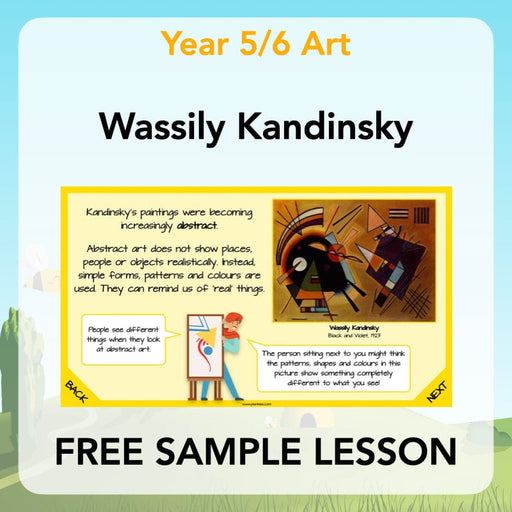


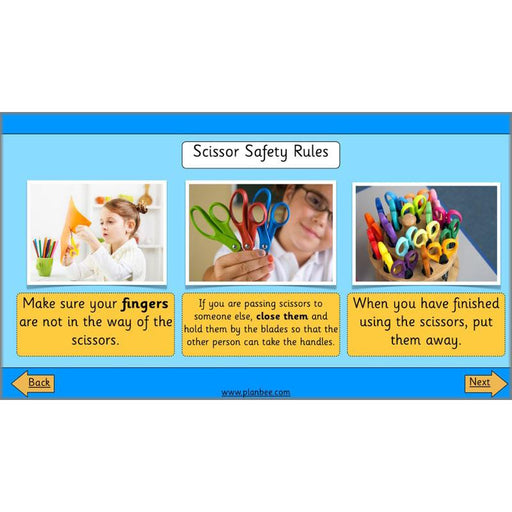
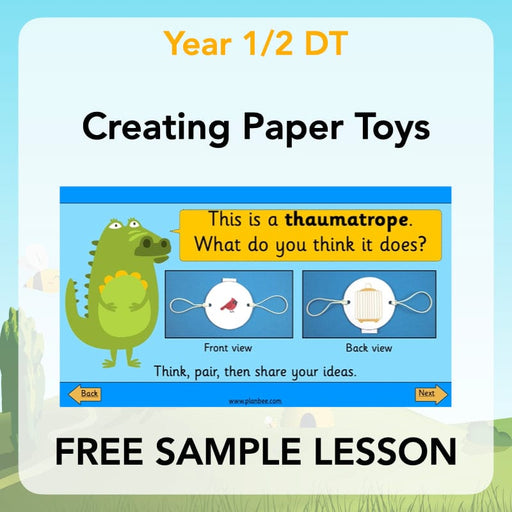

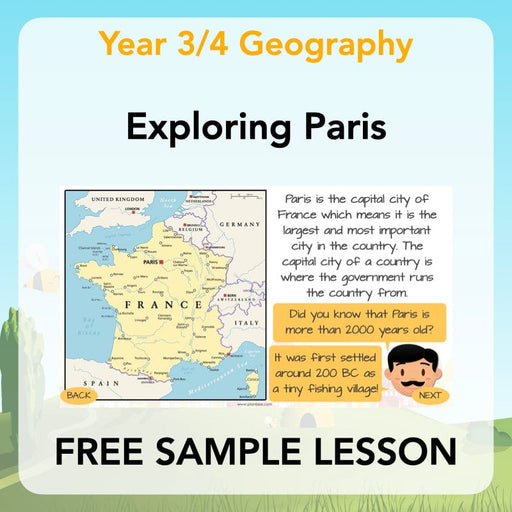
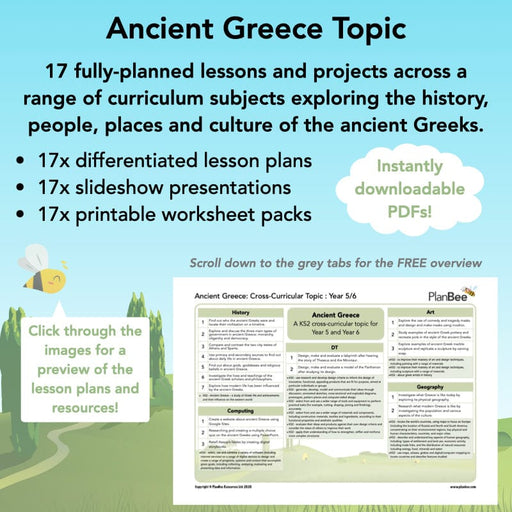
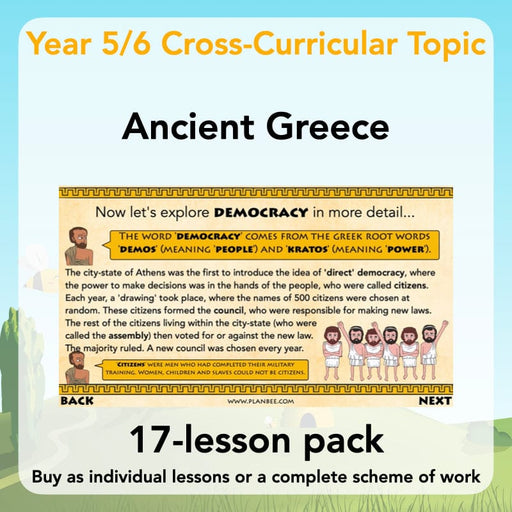
Leave a comment